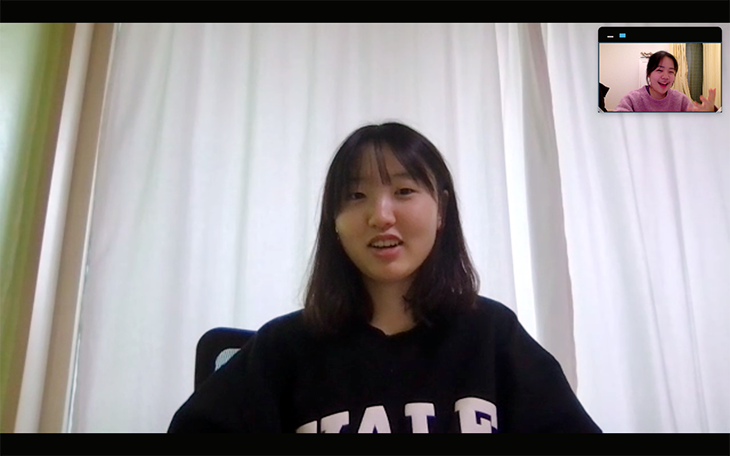While I was FaceTiming my friend, who moved to Korea a few months ago, I was curious about how Korean public schools and international schools are different. So, I decided to interview my friend, Siyeon Lee. She went to Dongshin Elementary School (Korean public school) from grades 1 to 5. She then moved to the International School of Prague (in the Czech Republic) because her father had to move there for his work. After finishing the first semester of grade 10, she moved back to South Korea. She is now in grade 11 and planning to graduate from Kimcheon Girls High School.

The biggest differences Siyeon noticed were the teaching style and class structure. She told me that at her international school, the classes were more student-orientated, while her current school is teacher-oriented. At her international school, they do different skill-building activities for students, including activities that develop communication and cooperation skills. However, at her Korean school, teachers only give lectures. She noted that the skill-building activities were the best thing about her international school compared to her current school. Due to this difference, students are more engaged in the lessons at international schools than at Korean schools. Another difference between classes is that, at international schools, students move from classroom to classroom, while at Korean schools, teachers are the ones who change classrooms for every lesson.
GPA is very important for most high school students when applying for university. At international schools, students don’t have an exact timetable for their exams for each subject, but Korean schools provide a yearly timetable for the exams. Mostly, Korean high school students take four big exams throughout the year: mid-semester and end-of-semester exams for two semesters. Siyeon said that there are lots of performance assessments at her current school, which are also already planned from the beginning of each year. These include writing lab reports for physics and writing a poem for Korean lessons. She added that she enjoys the self-study time. Since other students are all studying, she can motivate herself to be productive during this time.
There is also a big difference in school regulations. Siyeon said that the international school had a lot more freedom, such as the freedom for students to wear anything they want as long as it is appropriate. This contrasts with her current school, which has lots of restrictions, such as no permed or dyed hair, no accessories, no make-up, no phone, and strict uniform regulations. If the students violate these restrictions, they will get a demerit. If a student gets too many demerits, he or she may be suspended or expelled from school.

Siyeon felt that the biggest advantage of international schools is the teachers’ teaching style and class structure. She enjoyed being engaged in the lesson and appreciated being able to learn various skills through the activities prepared by the teachers. On the other hand, she thinks that the yearly exam plan and self-study time are the two best things about Korean schools, which made it easier for her to prepare for the exams. At the end of the interview, she said that all of this was her own experience, so it may vary from person to person.

Jessica Cho
Grade 11
International School of Prague

